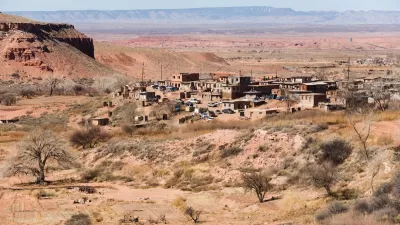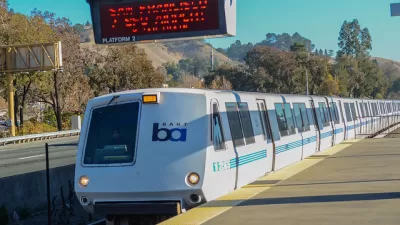Planning students are often told to find good information. How to do that is becoming both simpler, due to various search engines and databases, and more complex, given the amount of information available.
Planning students are often told to find good information. How to do that is becoming both simpler, due to various search engines and databases, and more complex, given the amount of information available. The following tips represent what I (and many other faculty members) actually do to find out about new things.
- Know something already. If you know something about the field you'll make better search decisions. You'll know key authors and organizations. I read a lot which makes searching easier. I also own a number of standard reference books--on topics from planning and design to social theory and research methods. I subscribe to and/or regularly read a number of magazines and journals. My list is a variation on the one offered by Rutgers faculty member Stuart Meck in a response to my last blog. It performs a similar function by giving me a place to start.
- Use specialist encyclopedias or dictionaries. The International Encyclopedia of Social and Behavioral Sciences (ed. Neil J. Smelser and Paul B. Baltes, 2001, Elsevier) has lots of entries on urban studies and planning and many university libraries subscribe to its online version. Entries are written by knowledgeable academics. I own dictionaries and encyclopedias of statistics, geography, philosophy, and architecture. They help me find out about key ideas and major thinkers in a subfield or on a topic--from social capital to Chonbach's alpha.
- Use specialist databases. University libraries subscribe to many databases--a favorite of mine is the Avery Index to Architectural Periodicals that includes quite a lot of planning articles (though not some from newer journals). In addition, as Stuart Meck mentioned in his ealier comment, there are several important online databases in planning. These include the TRB's Transportation Research Information Service (TRIS) and the HUD USER Database: http://www2.huduser.org/portal/bibliodb/pdrbibdb.html
http://tris.trb.org/. - Learn to be a sophisticated user of the internet. If I need academic sources I like using the databases that my library subscribes to but Google Scholar (not plain Google) is a good place to start if time is short. I particularly appreciate being able to enter a classic reference and see who cited it. The Berkeley libraries have an excellent guide to help you find and read web sites: http://www.lib.berkeley.edu/TeachingLib/Guides/Internet/FindInfo.html. Particularly useful is their section on evaluating web pages: http://www.lib.berkeley.edu/TeachingLib/Guides/Internet/Evaluate.html. They have great tips about how to evaluate the URL itself, assess information on the page perimeter, look for sources, and use reviews. This is basically what faculty do when they read web pages.
- Put ".edu" in with the search terms in an internet search to make extra sure you'll get some university web pages. University centers and institutes often have useful overview materials.
- Ask reference librarians how to find things. They can be helpful. I've learned a lot from them--particularly those specializing in images, maps, and statistical data.
Other blog entries have dealt with finding specific kinds of information including: general information about the field of planning, images, more images, articles, organizations, books, more books, and history sources.

Alabama: Trump Terminates Settlements for Black Communities Harmed By Raw Sewage
Trump deemed the landmark civil rights agreement “illegal DEI and environmental justice policy.”

Planetizen Federal Action Tracker
A weekly monitor of how Trump’s orders and actions are impacting planners and planning in America.

The 120 Year Old Tiny Home Villages That Sheltered San Francisco’s Earthquake Refugees
More than a century ago, San Francisco mobilized to house thousands of residents displaced by the 1906 earthquake. Could their strategy offer a model for the present?

Ken Jennings Launches Transit Web Series
The Jeopardy champ wants you to ride public transit.

BLM To Rescind Public Lands Rule
The change will downgrade conservation, once again putting federal land at risk for mining and other extractive uses.

Indy Neighborhood Group Builds Temporary Multi-Use Path
Community members, aided in part by funding from the city, repurposed a vehicle lane to create a protected bike and pedestrian path for the summer season.
Urban Design for Planners 1: Software Tools
This six-course series explores essential urban design concepts using open source software and equips planners with the tools they need to participate fully in the urban design process.
Planning for Universal Design
Learn the tools for implementing Universal Design in planning regulations.
Clanton & Associates, Inc.
Jessamine County Fiscal Court
Institute for Housing and Urban Development Studies (IHS)
City of Grandview
Harvard GSD Executive Education
Toledo-Lucas County Plan Commissions
Salt Lake City
NYU Wagner Graduate School of Public Service






























